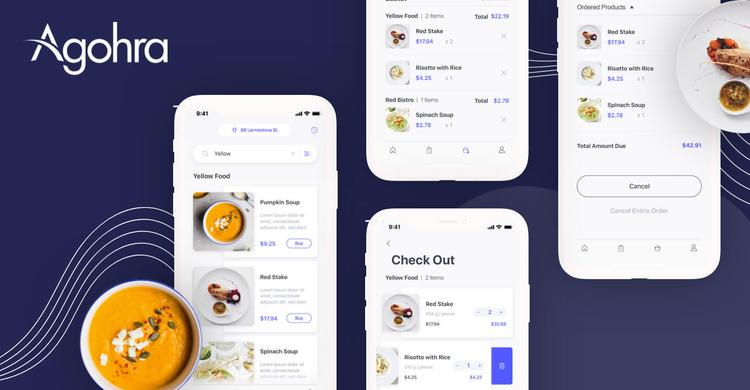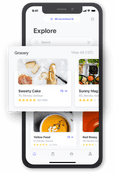Agohra On-Demand Delivery Network for Groceries

The concept of Agohra was born to tackle a plaguing concern – our lack of time. In this swiftly functioning world, time is something we find hard to make. In our distribution of time, we tend to lose out on some things that are crucial for our everyday lives, which is groceries. While we make time to finish our deadlines, pursue our hobbies, commute, maintain relationships, meet friends and do more, at the end of the day, we get back home with a long list of groceries we intended to buy.
That’s where Agohra comes in.
Agohra happened when we met our client in North Carolina, who wanted to create an on-demand delivery network for groceries. He pointed out a very crucial problem, where people were too busy to go to the convenience store to pick and get their groceries, So, he wanted to develop a platform that would help people have a dedicated agent choose groceries from different stores in different locations and deliver them to their home. He shared the visions he had for the problem and how intends to tackle this everyday problem with technology and the on-demand economy.
Problem
When we were discussing the challenges in the development of such a platform, we realized that Agorah was to have a seamless user interface to accommodate the different types of functions the app has to deal with. For instance,
- Challenges in integrating payment gateways,
- Cost calculations
- Bids management
- Unique user interfaces for distinct users (agents and shoppers)
- Managing text-to-speech for voice notes and additional information
- Location tagging and more
The app has to ensure that checkouts for both agents and shoppers are glitch-free and that payments happen seamlessly. A shopper must be able to get the orders placed and delivered and the agent must have a payment-processed order to deliver. All these should be handled simultaneously and in sequence for n number of users accessing the app.
Challenges
When brainstorming for the solution, the team unanimously pointed out that building an MVP would be the most practical solution to test multiple scenarios and variables. If you notice, there are a lot of activities happening within a short period of time on the app. There’s the list of items awaiting approval on the cart while the bid is placed. There’s also the approved bid and payment initiation and so on. Besides these, the app also had to include a feature of convenience like speech-to-text conversion, which will allow the shopper to send voice notes to the delivery agent with product specifics.
So, we assembled UI/UX designers, writers, frontend and backend developers and others to build the MVP and finalize the order journey. After multiple tweaks and pivoting, the product worked and there were multiple users working on the platform at once, ordering groceries from different locations. All the features functioned as required as well, leading to a successful market evaluation.
Result
With the success of the MVP, we managed to raise funding for the service. We have also onboarded a Chief Technology Officer to ensure further scalability and stability. We carefully reviewed inferences and results from reviewing multiple scenarios, use-cases and challenges and built a full-fledged product with even better user interface and functionalities. The app is now available for both Android and iOS on their respective app stores.
Industry and Tech Stack
Java, Swift, JSON, XML, HTML/CSS (Web View), MySql, PHP (Code Ignitor), MVP Build, UI/UX Design, Problem Resolution, User Journey, Micro interaction, Q & A
Strategy, Development, Design
We encourage candid discussions and would be happy to offer consultation to understand and address your pain areas.
Our Process








